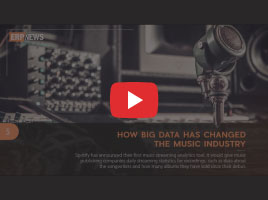
One of the main trends we are bound to observe in the evolution of ERP (enterprise resource planning) solutions is the decoupling of cumbersome, large-scale, inflexible all-in-one systems. These systems are giving way to looser and even more highly adaptable options such as cloud applications, SaaS models, alternative integrations, and hybrid IT architecture. This allows for a veritable breeding ground of best in class integrations and combinations to shine.

The natural evolution of ERP software will begin to sweep out the bugs inherent in early ERP systems, and provide better solutions that meet the needs of the customer at the exact stage of their business. This, in turn, creates an opportunity for each business to have a system tailored to its unique needs rather than forcing each entity to squeeze itself into a robust, yet at times unwieldy, central solution.
ERP software systems have grown from a glimmer in the eye of technology entrepreneurs to a standard fixture of modern business. And it would appear to be finding a stronghold necessary for thriving in today’s complex industrial infrastructures. Although many changes loom on the horizon, the concept of unifying information and doing away with redundancy, information gaps, and data silos, will remain.
The premise of one singular hub of real-time business management will continue to show its value and remain the foundational strategy of ERP software systems at large.
Software as a service
When it comes to SaaS (software as a service), we can anticipate continued change in the following areas: pricing models, methods of delivery, and flexibility in configurations. ERP configurations have the unique advantage of riding on the coattails of the SaaS boom and taking advantage of new technology that brings impressive aid to the ERP evolutionary process.
Instead of large upfront expenses, one size fits all implementations, steep learning curves, post-purchase customisations, data centre hardware requirements, and near-blind commitments, hosted options have lowered the barriers to entry and reduced complexity, allowing for widespread ERP adoption.
The SaaS conversion is slow-moving, and many traditional license-based ERP adoptions are still in play. This provides all ERP vendors the time needed to renegotiate purchase prices, reconfigure their value propositions, and target niche industries in lieu of jumping ship. Although many large, legacy ERP providers are digging in their heels, SaaS is beginning to gain widespread favour and many providers are gently testing the waters of software as a service. This interplay of SaaS and hosted ERP services has offered a unique playing field for the negotiation of future ERP models.
Speed
Managing a large system can be cumbersome, and new integrations and adoptions can be time-consuming and fraught with difficulty. The technological world seems to advance exponentially; nobody has time for dial-up internet anymore, nor do they have the time to wait for annual – or quarterly – upgrades, or a system implementation ROI that takes several years to prove its worth.
The future ERP will need to produce data and analytics quickly, reliably, and with location-independent availability
Industries reliant on a changing market require fast decision making and the data necessary to make the right calls at the right time. The future ERP will need to produce data and analytics quickly, reliably, and with location-independent availability. Easy access to actionable data is necessary to keep a business ahead of the game and able to anticipate resource needs before they hit, saving time and money, improving the customer experience.
Cost
We’ve already seen how economic downturns can take a toll on large software providers. This, in turn, has opened up the playing field, allowing solutions provided by lesser-known companies to find their way into the big leagues simply by offering a less painful monetary commitment from their users.
The future will undoubtedly follow this trend. As solutions become more segmented and flexible, so will pricing models and payment options. By selecting only the systems they need, businesses will be able to create the most ideal and affordable solution in an ‘a la carte’ fashion. This will also drive up the competitiveness of the ERP software market, and breed the creativity necessary to break out of the cookie-cutter mould of the standard ERP.
In addition to varying costs in the ERP market, the flexibility available in new SaaS environments coupled with the ability to partner with systems via API integrations will provide businesses with the ability to cost compare and select from a wider variety of software vendors both within and beyond the ERP market.
Evolution from single instance
The dream of having an all-encompassing software solution and a single instance of business software applications is much more realistic in a world where integrations, multiple networked systems, and varying channels are limited. But in a future where a central system needs to be coupled with the flexibility to harness a variety of new technologies and applications, businesses need a happy medium between scattered systems and a one size fits all application.
Such a middle ground will require an entirely new platform of tools to crop up and become the middleman. These new ‘middleware’ intermediaries will provide easy plug and play capabilities to ease the communications between ERP systems and their connected applications.
Creativity
ERP is traditionally used for operational purposes to streamline processes and help data flow efficiently. But the future of ERP holds a greater purpose for these large software systems. Vendors are getting creative and bringing instantaneous data production to the forefront to help businesses make rapid and effective decisions while also taking advantage of new services and demographics.
Better connectivity and data collection are leading to the ability to quickly analyse and transform their current sales strategies to take advantage of the current market, instead of having to build solely on prospective assumptions or historical data.
Conclusion
Future ERPs bring the promise of new configurations that help connect every resource under a business’s umbrella, provide more mobile opportunities, lower the barrier to entry and reduce training times, bring SaaS to the forefront, decouple business processes to allow for improved API integration capabilities, eradicate big system bugs, provide quicker data access, and offer a better user experience.
In a fast-paced world of evolving technology, ERP software will undoubtedly keep pace and continue to grow into a more sophisticated and adaptable solution.
Author: Aaron Continelli




















